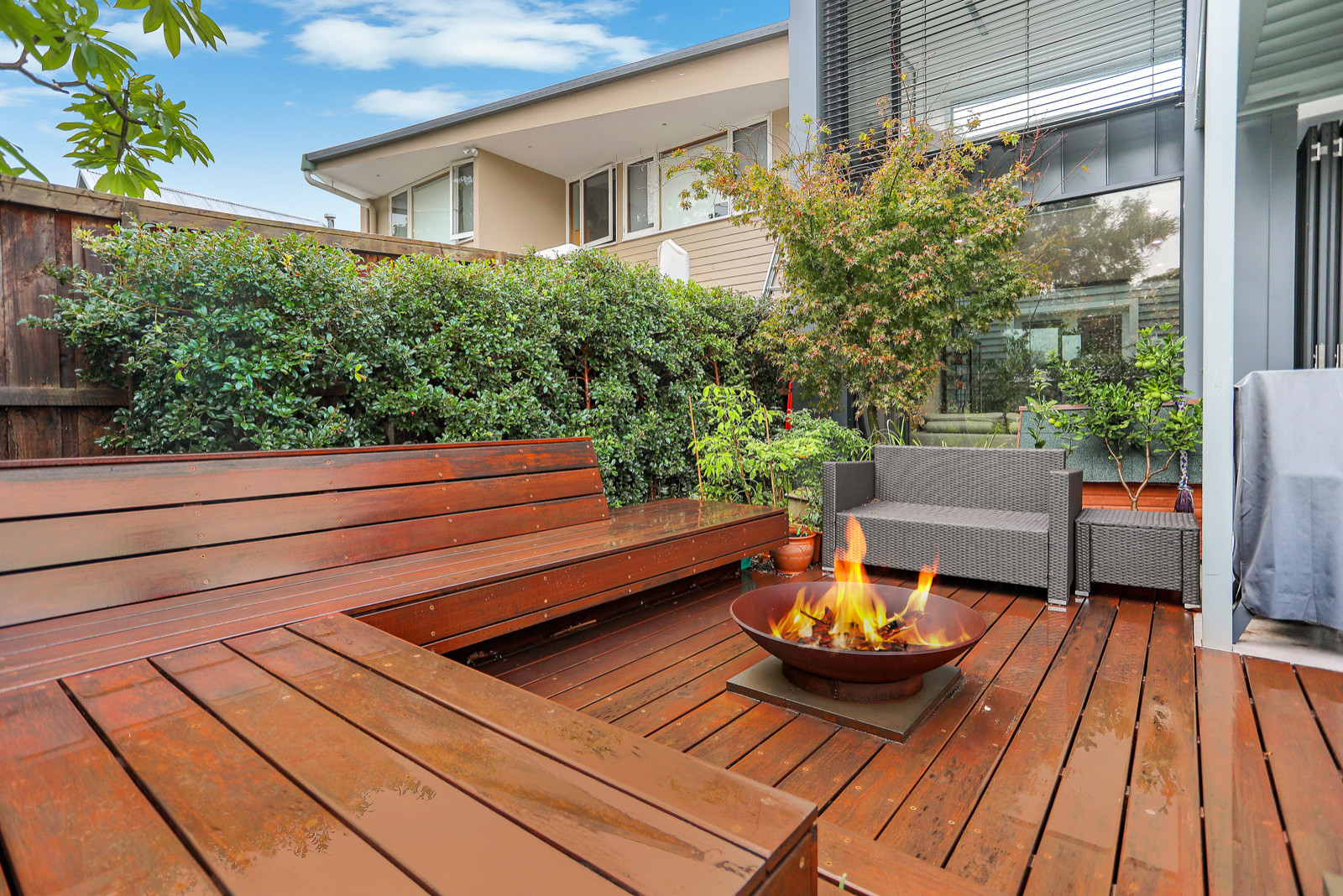Generally, there are different deck materials deck builders Salt Lake City professionals can work with to build the best outdoor decks for homeowners. However, various outdoor patios should also be considered before starting any deck-building projects.
These different outdoor decks are categorized based on the structural design, intended use, and location in the landscape. Here are the most popular types of decks:
#1. Wrap-around Decks
The wrap-around deck is typically a slightly elevated structure that wraps around two or more sides of the house to connect multiple areas. It is also best considered a large attached deck.
In other words, wrap-around decks are appropriate for large outdoor living areas that connect not one but multiple sides of the house. This type of outdoor deck can be narrow or spacious based on your budget and the space around your home.
Wrap-around decks have spaces for steps as well as railings. They are also occasionally roofed (referred to as wrap-around porches).
However, roofing materials drive up building expenses. And this is one of the downsides of wrap-around decks.
Nevertheless, this type of outdoor deck comes with many benefits. One of the advantages of choosing this type of outdoor deck is it provides a lot of functional outdoor space.
Additionally, it is conveniently accessible from various points around your house. Another advantage of building a wrap-around deck is helping in indoor air circulation when you open the access doors.
#2. Attached Decks
The attached decks are the most common outdoor deck type structurally attached to the house. This type of outdoor deck is usually L or U-shaped. Sometimes, they also come in square or rectangular shapes.
Attached decks are typically built as an addition to an existing room, like a dining room, family room, or kitchen. This type of outdoor deck is accessible through doors that allow unrestricted passage between the outdoor and indoor spaces.
One of the advantages of this type of outdoor deck is how cost-effective it is. This is because building attached decks requires fewer deck materials and labor.
Some downsides come with choosing attached decks. Since they are attached structures to the home, they must adhere to the building code standards. Building codes mandate that these decks be supported by posts and footings when elevated above the ground.
If elevated, it should have railings and stairs that comply with the building code. Therefore, for homeowners or deck builders in Salt Lake City to build such decks, they must obtain permits. This kind of deck project will also need to pass inspections by Salt Lake City officials.
Another drawback of attached decks is that poor installation or maintenance could result in structural damage to your house. Since it is structurally attached to the house, the home could have issues from poor weight balance or even water accumulation.
#3. Detached Decks
Like the name, detached decks are the opposite of attached decks structure-wise. They are not structurally attached to the house; instead, they are constructed as a separate structure in the yard and often connected to the main house by a pathway.
Most detached decks are commonly situated close to a gazebo or pool. Sometimes this type of deck is also called a floating or platform deck.
One of the advantages of this outdoor deck is that it is the easiest to build. Therefore, detached decks are best recommended for homeowners who want to avoid hiring professional deck builders.
Additionally, construction costs for detached decks are often lower when compared to the cost of building attached decks. Furthermore, you can construct one without getting a building permit in many places.
Detached decks have their drawbacks too, and of them is that it requires regular maintenance. Furthermore, independent decks are more vulnerable to damage from moisture than elevated decks. Another downside of separate decks is that they usually need an additional patio or walkway for access.
#4. Multi-Level Decks
Multi-level decks comprise several separate decks on individual levels linked by stairs. If your property is not perfectly level or has hills, slopes, or rocky landscapes, this type of outdoor deck is a great option.
If you do not build a series of decks offset at various heights, hills, slopes, and rocky terrain may make it impossible to create any outdoor living spaces. This kind of outdoor deck also has the benefit of allowing for both attached and detached design styles.
A multi-level deck can have sections attached to the home as the attached deck. They also have detached segments connected by stairways. However, one of the disadvantages of this type of deck is it is difficult for do-it-yourselfers (DIYers) to build.
Additionally, it is one of the most costly outdoor decks to build. Another downside of an outdoor deck is it demands significant periodic maintenance.
Other types of outdoor decks include:
- Rooftop / Over garage deck (most suitable for limited yard space)
- Side-yard deck (best recommended for small seating spaces and walkways)
- Swimming pool deck (best for walking and seating areas around swimming pools)
- Entryway deck (most suitable for extending livable space to the front of the house)
- Dedicated-use deck (best for creating space for favorite activities)
Conclusion
Understanding the different types of outdoor decks will help you know the right one to choose when adding a deck to your home. However, hiring a professional deck builder is advisable.
